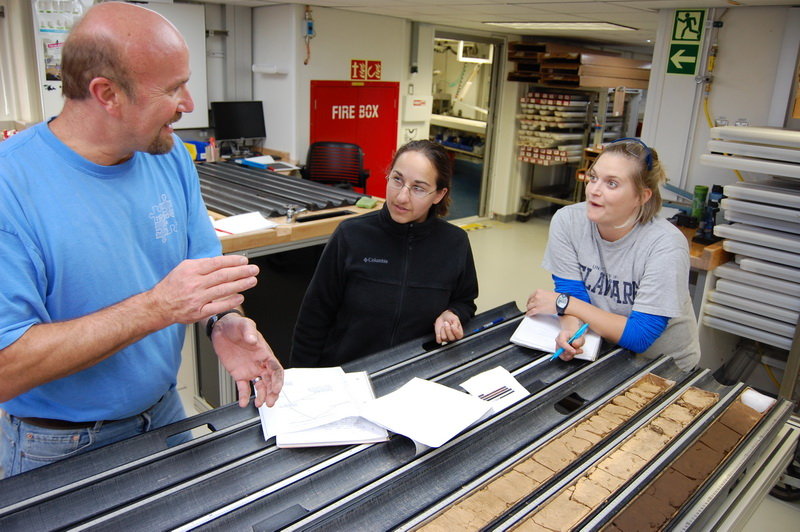
Working in the core lab
Here we see Steve Hovan explaining a facet of core interpretation to School of Rock participants Sabreena and Emily. We had a great time, scraping very small pieces off the cores, smearing them on a slide and then looking under the microscope to see what diagnostic features we could spot, varying from clay, dust, foraminifera, diatoms, volcanic glass and coccoliths. The interesting part is then trying to work out the story the information tells. Some of the cores have mould on them, some of them smell foul, but they are repositories of information that has cost millions of dollars to retrieve. They are split in two along their length, with one of the sections archived in a huge warehouse in Texas, while the other section is worked on by chemists, microbiologists, and palaeontologists. The ship is packed with high tech labs (including X-ray diffraction) to extract as much information as possible as quickly as possible, before the sudden change in temperature and pressure as they are brought to the sea surface starts degrading the core contents.